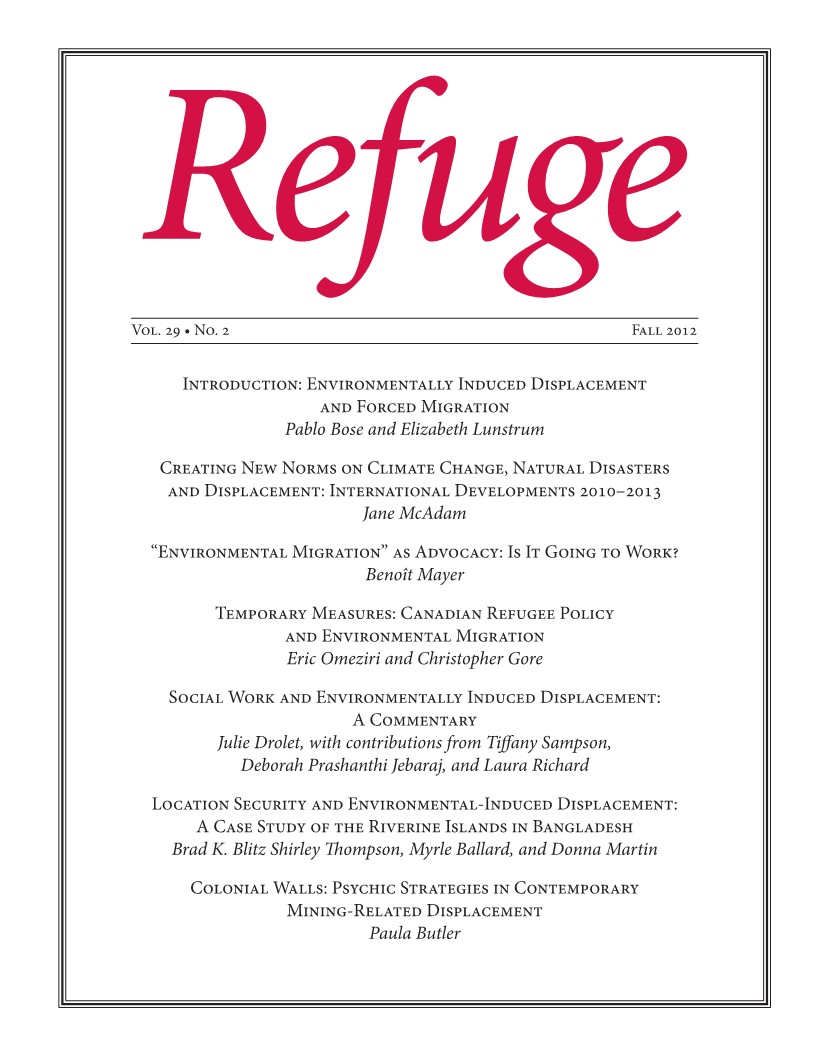Location Security and Environmental-Induced Displacement: a Case Study of the Riverine Islands in Bangladesh
DOI:
https://doi.org/10.25071/1920-7336.39285Keywords:
Bangladesh, riverine islands, char dwellers, environmentally induced displacement, location security, sustainable livelihoods, resilience, vulnerabilityAbstract
This article introduces the concept of ‘location security’ to describe the specific relationship between place, environmental and human security. It argues that ‘location security’ is determined by a location’s resilience to risk, understood in terms of the degree to which a specific region is protected by virtue of geographical endowments and has sufficient infrastructure to withstand and recover from the effects of environmental hazards and ensure that rights are protected. To illustrate the concept of location security, this article uses the sustainable livelihoods framework to explore actual and anticipated environmental pressures that affect the river deltas of Bangladesh, and examines the adaptation responses developed by the inhabitants of the riverine islands. A central finding of this article is that flexible migration and localised coping strategies based on acute knowledge of their local ecological and geological systems, enables the char dwellers to reduce their vulnerability. In this setting, human and environmental factors when harnessed may enhance agency to mitigate hazards.
Metrics
Downloads
Published
How to Cite
Issue
Section
License
Copyright (c) 2014 Brad K. Blitz

This work is licensed under a Creative Commons Attribution-NonCommercial 4.0 International License.
Refuge authors retain the copyright over their work, and license it to the general public under the Creative Commons Attribution-Non Commercial License International (CC BY-NC 4.0). This license allows for non-commercial use, reproduction and adaption of the material in any medium or format, with proper attribution. For general information on Creative Commons licences, visit the Creative Commons site. For the CC BY-NC 4.0 license, review the human readable summary.








